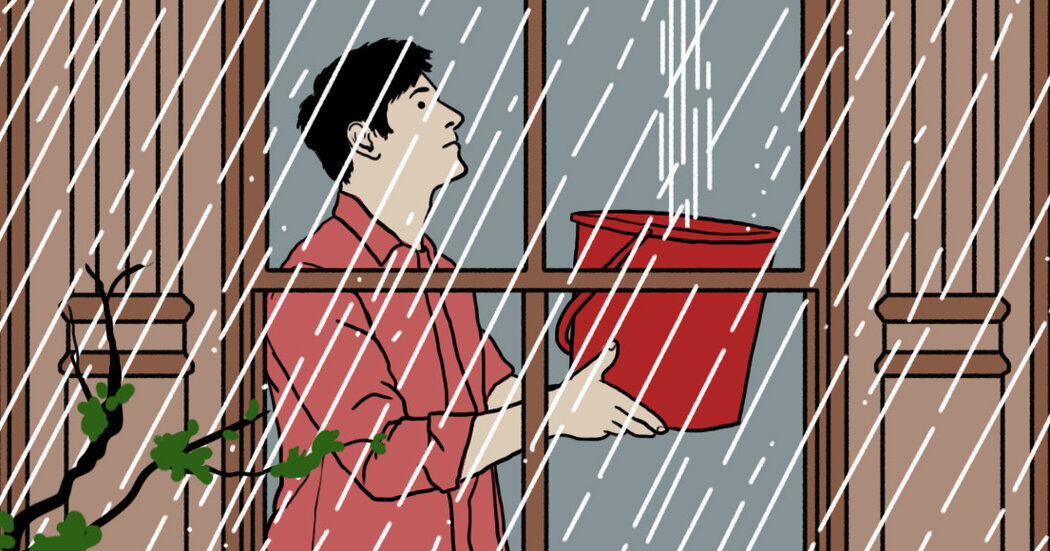[ad_1]
Tatiana Martinez needed an accessible home. Her then 7-year-old son needed a wheelchair and was too heavy to carry up the stairs to a bedroom on the second floor.
“I’m limiting my housing search to the few towns I already live in because I want to keep the same school services for my son,” said Ms. Martinez, a Union County, N.J., resident.
After three years of searching, Ms. Martinez bought a single-story home near Summit, New Jersey, in 2019 for $900,000. She then installed an elevator at the front door of the house, installed a ramp to the backyard, remodeled the bathroom to comply with the Americans with Disabilities Act, and widened several doorways. The modification fee is $50,000.
Stories like Ms. Martinez’s are playing out in millions of families across America. According to the 2019 American Housing Survey data, 12.9% of US households, or 16 million households, have at least one person using a wheelchair, walker or other mobility device. Of those 16 million households, at least 3.5 million plan to improve the accessibility of their homes.
Several state governments, nonprofit organizations, housing groups, and developers can provide resources to provide safe housing for family members of all abilities.
Accessibility Solutions
Home styles vary greatly from state to state. Accessible housing may be easier to find in some parts of the country than others. For example, pastures are easier to find in the South and West. In the Northeast, two-story houses are more common. The good news is, whether you choose to stay with your current home or remodel after you move, there are plenty of opportunities to make your home more convenient.
“Ramps, elevators, and releveling are all options that experts can weigh with a home appraisal,” said Gregg Frank, owner of Back Home Safely, a New Jersey-based remodeling company.
Tucker Cassidy of Waterloo, Iowa, moved because he needed to live in an area with more home health aides. He scoured real estate listings, Craigslist, and even roommate ads until he found a home that met his needs, “The bedroom is big enough for my electric chair, shower chair, Hoyer lift, adjustable bed, and storage for medical equipment.” “. Cassidy said. He then widened several doorways and added concrete ramps to the front and rear doors.
“Each type of modification depends on the Eric Rubel, director of marketing at Lifeway Mobility, a company addressing personal accessibility issues across the country, said: “Entries with several steps may be better suited by adding a wheelchair ramp, for example. A wheelchair ramp is usually the fastest and most economical solution for lower level access. However, if space is limited, a wheelchair lift or stair lift may be the only solution to provide safe access. Other factors to consider when looking for accessibility include Little to no stairs, flush entrances, no height changes at thresholds, wide doorways and roll-in showers.”
To find a local remodeling specialist, contact the National Association of Home Builders (NAHB), whose Certified Weathering in Place Specialist (CAPS) can help evaluate a home’s accessibility opportunities. Occupational therapists with a certification in environmental modification can be found through the American Occupational Therapy Association (AOTA) and can help customize a home specifically for an individual or family’s needs.
“Modification should be client-centered,” says Carolyn Sithong, occupational therapist and founder of Home for Life Design, a web-based home assessment solution for healthcare professionals. “They should be driven by people and human capabilities.”
Costs and Financial Support
Jennifer Boyle and her husband Neil bought and modified a ranch home in Essex County, New Jersey, for their son Sean, 19, who uses a wheelchair entry. Ms Boyle said the house “has stairs from the driveway to the pavement and another set of stairs at the front door”. “We remodeled the yard and added a driveway so we could park near the front door and roll our son’s wheelchair into the house.”
It cost $33,000 to renovate their home, and they were reimbursed $25,000 from the New Jersey Children’s Catastrophic Illness Relief Fund. The program reimburses families for costs related to their children’s medical conditions, including home improvements, if the family’s costs exceed a certain percentage of their income.
“Reimbursement is not guaranteed, but the fund may consider all expenses related to the child’s condition within 12 months,” said Christian Heiss, executive director of the New Jersey fund. If eligible, residents can receive $25,000 a year in home improvement expenses.
Massachusetts also has a Child Catastrophic Illness Relief Fund Program. To find out if a similar program exists in your state, contact your state Department of Human Services.
Adiba Nelson of Tucson, Arizona, was able to remodel her bathroom when her daughter Emory Webster was 10 years old and started driving a power wheelchair herself.
“The house is a one-story dwelling that is mostly accessible. It has no thresholds or carpet, an open floor plan, wide rooms and doorways. The pantry has lower shelves so my daughter can easily grab the Grab a snack. We remodeled the bathroom and removed the bathtub and replaced it with a roll-in shower,” Ms Nelson said.
She received funding through the Arizona Department of Developmental Disabilities to remodel the bathroom, which she guessed cost about $15,000, though the department paid for it directly.
Medicaid and other programs vary by state, but Mr. Rubell of Lifeway Mobility recommends that clients who may need financial support consider various state or nonprofit programs. Ray Hough of Graceffo, Hough & Weintraub, an accounting firm in Glen Rock, New Jersey, says certain home improvements that are medically necessary to care for a disabled person can be deducted as an itemized deduction. Taxes such as “construct entry or exit ramps to your home, widen doorways to entry or exit from your home, or widen or otherwise modify hallways and interior doorways.”
A few years after remodeling the home, Ms. Nelson separated from her husband and looked for rental accommodation. Ms Nelson said she eventually found a “two-storey townhouse with a bedroom on the ground floor”. “My daughter is on the ground floor and I’m on the second floor. We like to have our own space.”
Renters may need to pay more attention to accessibility since they are less likely to make permanent modifications.
According to the Fair Housing Act, which protects tenants and buyers in the housing market, “it is unlawful to deny reasonable accommodation to a rule, policy, practice, or service if it is necessary to provide equal housing for persons with disabilities.” Opportunity to use and enjoy the residence as well as the common and shared areas. “
Glen H. Parker, a disability rights attorney in New York, said that under the Fair Housing Act, renters typically need approval from their landlords and must pay for remodeling and return the home to its original design. Some states and cities are giving renters more rights to require landlords to pay for renovations, he said.
To access the house from the outside, the least permanent option and the fastest way is to add an aluminum ramp. Aluminum ramps are portable and can usually be installed in one day. “Ramp costs depend on length,” says Safe Home owner Mr Frank. “For every inch of rise in the steps, you need about a foot of ramp. Three eight-inch steps require a ramp that is 24 feet long, and a foot of ramp costs about The entrance with steps will cost about $3,600. Also available for rent.”
Ellen Ladau and her daughter Emily are both powered wheelchair users in Suffolk County, Long Island. Ms. Rado remodeled the bathroom, adding a roll-in shower and sink. She was able to get funds through Medicaid to cover the costs, but the first modification was unsuccessful because the wheelchair’s turning radius wasn’t wide enough.
“It’s important to find the right person to do the evaluation,” says Ed Myers, an associate professor of occupational therapy at Florida Gulf Coast University in Fort Myers. “Ask the right questions and make sure the evaluator focuses on the whole person, the family, and what activities are important in everyday life.”
One home remodel may not be enough for most people with disabilities.
Ms. Rado ended up remodeling their bathroom a second time. Now, she is slowly tweaking the kitchen to make it more functional. For example, she moved plates and bowls to lower cabinets, which made it easier to empty the dishwasher.
“It didn’t happen overnight,” Ms Rado said. “A person’s needs develop and change over time. As you get older, changes you make at some point may no longer be effective.”
Accessibility for all
In the future, universal design, or homes built from the ground up with open floor plans, no-step entry, and barrier-free access, could allow any and all individuals, regardless of ability, to enjoy the amenities of a home.
But beyond the simplicity of the design, cost was a concern for Micaela Connery, co-founder and CEO of The Kelsey, a San Francisco Bay Area nonprofit. Kelsey works with housing developers across the country to create accessible homes.
These developers are either proactively seeking to incorporate disability-considerate design in the populations they serve, or they work in places where accessibility and inclusion for people with disabilities is encouraged or required. Housing income restrictions may apply.
“We want to design better housing for all by focusing on affordability, accessibility and inclusion,” Ms Connelly said.
Their designs typically include communities of 100 or more housing units that are convenient and affordable, often near public transportation. This makes public transportation easily accessible to wheelchair users and others with disabilities, enabling them to work, enjoy community life and be closer to family, friends and other essential resources.
“If you’re too tired to get ready in the morning, you won’t go out,” says Dr. Myers. “Personal accessibility begins with being human.”







